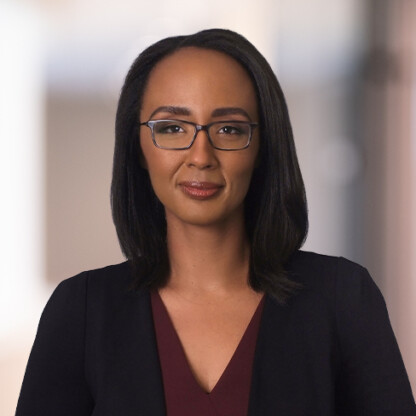Foley Black History Month Program: How to Have Hard Conversations on Race

In the spirit of Black History Month, Foley & Lardner hosted a firmwide virtual program on February 16 featuring Michelle Silverthorn, founder & CEO of Inclusion Nation and author of the best-selling book Authentic Diversity: How to Change the Workplace for Good.
Silverthorn began her interactive program, titled What If I Say the Wrong Thing: How to Have Hard Conversations on Race at the Law Firm, by asking attendees to think about one person they are having this conversation with and to hold that person in their head throughout the presentation. Then she laid out some reasons why it’s hard to talk about race and why we must talk about race.
“The word race creates so much anxiety,” she said. We want to avoid conflict and are scared of being hurtful for saying the wrong thing, so we go into our siloes where reinforcement of our biases create so much baggage that conversations about race cannot take flight. “Talking about race is crucial to create a sense of belonging where colleagues feel welcome and have the safety to speak up.”
The centerpiece of the program featured Silverthorn’s five principles for starting conversations on race, which she demonstrated through several difficult scenarios that arise in and outside of work.
“I want to make sure you are building up those skills – and not just in a crisis – so that you are ready, willing, able, and have the right words to say when the opportunity arises,” she said.
- Understand your discomfort and what is causing it. Think about a prior experience that tells you this won’t go well and understand what skills you need to make it go better. The goal is to own rather than remove your discomfort so that you can keep getting better.
- Center the marginalized person and their emotions. Think about what it’s like to be the only or the first, to know you’re not part of ‘in’ groups. If someone tells you about bigotry they’ve experienced, center their emotions, and don’t say that you haven’t done the thing they’ve experienced.
- Have goals in your conversation. Whether it’s to provide feedback, gain understanding, speak out, bring awareness, or simply to try to listen, goals help to get and keep the course of your conversation on track.
- Listen with your whole self. If you want to have real conversations, you have to be interested in what the other person is telling you. Start with curiosity, be there to learn not to debate, and acknowledge what they are saying to you.
- Start and end with respect and empathy. Respect your conversation partner because of who you are, acknowledge what they’ve experienced, approach their suggestions for change with respect, and understand their pain, discomfort, and perspective.
Silverthorn ended the program with the story of Darnella Frazier, who faced a stark choice on May 25, 2020 when she recorded the beating of George Floyd and posted it on social media. “I hope you will be brave, that you will listen, that you will speak, that you will have the courage that Darnella had…to say today is the day I change the world,” Silverthorn said.
She previously presented a program at Foley in July 2020 titled How to Build a Racially Just Workplace and has been a guest on our The Path & The Practice podcast.
Read more about Diversity & Inclusion at Foley.
